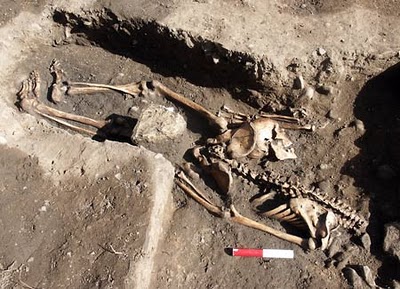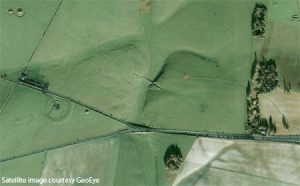 There are nearly 1,000 prehistoric stone circles in Britain and Rupert Soskin – together with producer Michael Bott – has visited over 100 of them, making an astonishing documentary about these magnificent Neolithic and Bronze monuments, focussing on a lot of the lesser known prehistoric stone monuments from megalithic Britain. Barrows, henges, borrows, cists, thrilitons and solitary megaliths, Soskin covers them all. ‘Standing with Stones’ wants to take the viewer beyond Stonehenge – that all-too familiar icon of Stone Age Britain – on an incredible journey of discovery that reveals the true wealth and extent of Neolithic and Bronze Age Britain & Ireland.
There are nearly 1,000 prehistoric stone circles in Britain and Rupert Soskin – together with producer Michael Bott – has visited over 100 of them, making an astonishing documentary about these magnificent Neolithic and Bronze monuments, focussing on a lot of the lesser known prehistoric stone monuments from megalithic Britain. Barrows, henges, borrows, cists, thrilitons and solitary megaliths, Soskin covers them all. ‘Standing with Stones’ wants to take the viewer beyond Stonehenge – that all-too familiar icon of Stone Age Britain – on an incredible journey of discovery that reveals the true wealth and extent of Neolithic and Bronze Age Britain & Ireland.
For the full 136 minutes (+ extras, of course) megalithic experience you should buy the DVD(or the book), but Michael Bott also made quite a bit of excerpts available for viewing on the website standingstones.tv and YouTube. I must admit though that, despite the many fascinating stories Rupert Soskin tells about ancient sites previously unknown to me, my favourite part of the film is a reconstruction of one of the ‘giants’, Stanton Drew in Somerset, and Soskin’s theory about it.
With a diameter of over 112m, Stanton Drew is the second largest stone circle in Britain after Avesbury. It probably consisted of 30 stones, of which 27 still surive today. And if that was not yet impressive enough, a geophysical survey by English Heritage in 1997 revealed that the stone circle was surrounded by a ditch (7m wide), a raised bank and a 40m wide entrance, as well as 9 concentric rings of postholes within the stone circle. As each post was a meter apart and a meter or more across, this means over 400 wooden posts must have at one time been raised inside the monument.
Now why was this artificial forest created? Rupert Soskin suggests that Stanton Drew might have been a ‘hunting arena’, where spectators seated on the bank watched different communities competing and showing off their hunting skills. Blood sports?! Soskin defends his theory by pointing out that as at that time, the most of Britain was covered in forest and the most skilled hunter would have been held in high esteem, possibly even beyond his own community. The deep ditch would have stepped animals from escaping into the rowd while the forest of posts would create an enclosed but nevertheless real hunting ground. Yet, Soskin adds: “But then again, this amount of huge posts could easily have supported a flood, exactly the same design concept as for the Great Colosseum in Rome but preceding it by thousand of years. One can only wonder.”
And wonder, that’s exactly what Rupert Soskin’s theory made me do, even if a neolithic version of the Olympic hunting games might not be the most likely answer. Why would a group of people spend that much effort on a location to play games? Err…. 2012 you say? Well, never mind that question. 😉



